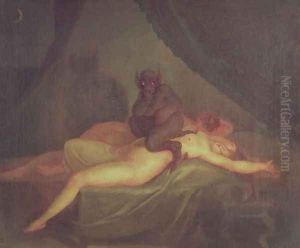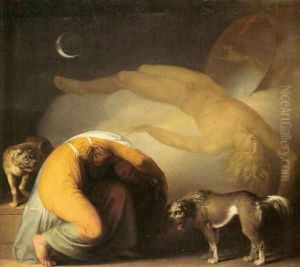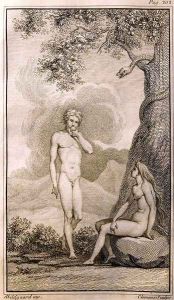Nicolai Abraham Abildgaard Paintings
Nicolai Abraham Abildgaard was a preeminent Danish painter, architect, and teacher born on September 11, 1743, in Copenhagen. His father, Søren Abildgaard, was an eminent antiquary, and his mother, Anne Margrethe Bastholm, was also an artist. From this culturally enriched background, Abildgaard developed a keen interest in the arts from an early age. He began his formal education at the Royal Danish Academy of Fine Arts in Copenhagen in 1755, where he initially trained under artist Johan Edvard Mandelberg. Abildgaard showed exceptional promise and was awarded several medals for his accomplishments.
Abildgaard's early works were influenced by neoclassicism, which was sweeping through Europe at the time. His art often contained elements of classicism combined with the emotional charge of the emerging Romantic movement. In 1772, he won a prestigious travel scholarship from the Academy, which enabled him to study abroad. He spent significant time in Rome, which was a hub for artists wishing to study ancient classical art and the works of the Renaissance masters. During his time in Italy, Abildgaard was particularly influenced by the discoveries of ancient Roman cities such as Pompeii and Herculaneum, which reflected in the archaeological and mythological themes in his later works.
Upon returning to Denmark in 1777, Abildgaard became a member of the Academy and soon after a professor. He went on to become the director of the Academy, a position he held intermittently until his death. During his tenure, he played a significant role in shaping the education of a generation of Danish artists. Among his most famous students was the renowned Danish sculptor Bertel Thorvaldsen.
Abildgaard's work extended beyond painting, encompassing set designs for the Royal Danish Theatre and architectural projects. He was instrumental in the rebuilding efforts after the Copenhagen Fire of 1795, where he demonstrated his architectural prowess. His versatility as an artist also led him to engage in decorative work for various buildings, including Christiansborg Palace.
In his personal life, Abildgaard was known to be passionate and sometimes difficult, traits that occasionally led to conflicts with his peers and patrons. Despite this, his contributions to Danish art were significant. His legacy includes a vast range of works from history paintings to portraits and landscapes, all marked by a dramatic use of light and shadow and a predilection for dramatic, often morbid, subject matter.
Nicolai Abraham Abildgaard passed away on June 4, 1809, in Copenhagen. His influence persisted long after his death, affecting Danish art into the 19th century, both through his own works and those of his students. Today, he is remembered as a central figure in the Golden Age of Danish Painting and his works can be found in major museums such as the National Gallery of Denmark.


